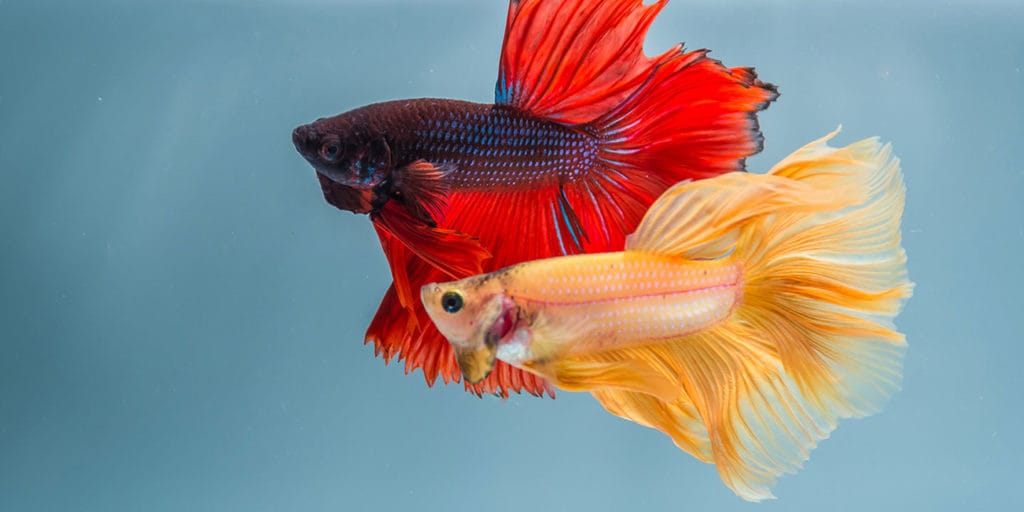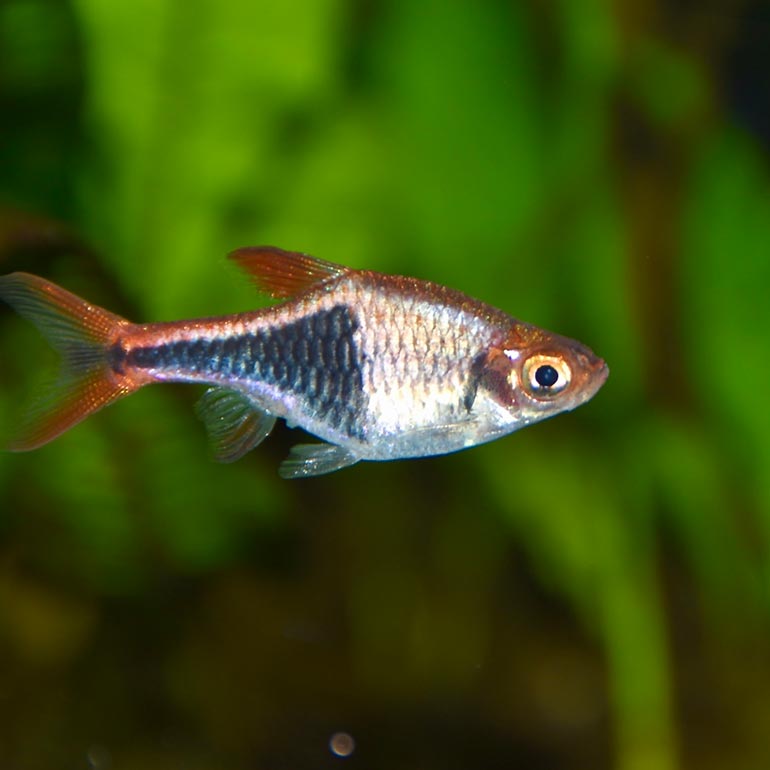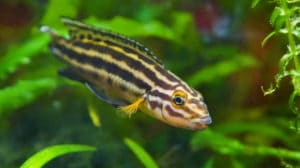Betta fish have a reputation for being feisty and territorial, and they're generally considered to be poor tank mates—but that's not always the case. While betta fish can be aggressive, they can successfully live with other fish—as long as you choose their tank mates wisely.
If you’re looking for a friend for your betta, consider one of the following 10 best betta fish tank mates.
Click the buttons below to jump to that section:
What Fish Can Live With Bettas?
When considering fish and other aquatic animals to put with bettas, make sure that your potential tank mates will thrive in the same water conditions and habitats as your betta fish does.
Here are the top recommendations for betta fish tank mates.

iStock.com/Juan Carlos Juarez Jaramillo
1 Snails
Minimum tank size: 5 gallons
Snails are some of the best tank mates for bettas.
Mystery snails in particular are a great option as they clean up algae, consume uneaten food, are extremely docile, and have a hard shell to retreat into in the event your betta is particularly curious.
Nerite snails are another great choice and have intricate shell patterns that add an interesting visual element to your tank.
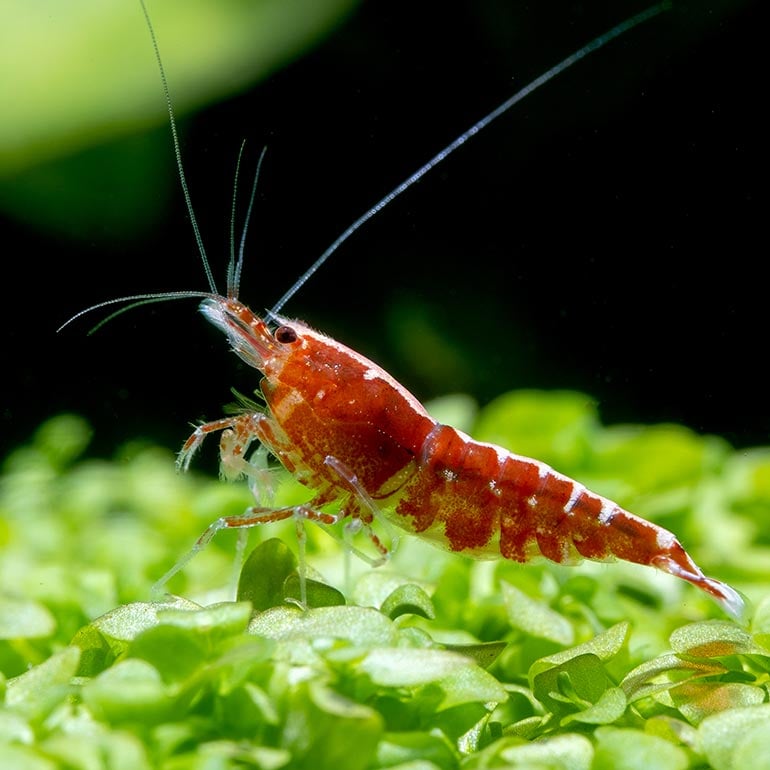
iStock.com/Narongrit Sritana
2 Shrimps
Minimum tank size: 10 gallons
Several shrimp species such as the bamboo shrimp, Amano shrimp, cherry shrimp, and ghost shrimp, can coexist well with your fish.
Ghost shrimp and red cherry shrimp are the best candidates for this role and make great members of your aquarium cleanup crew. Nothing goes to waste with shrimp in a tank, and both varieties are fascinating to watch in the aquarium. They do particularly well with live plants, too.
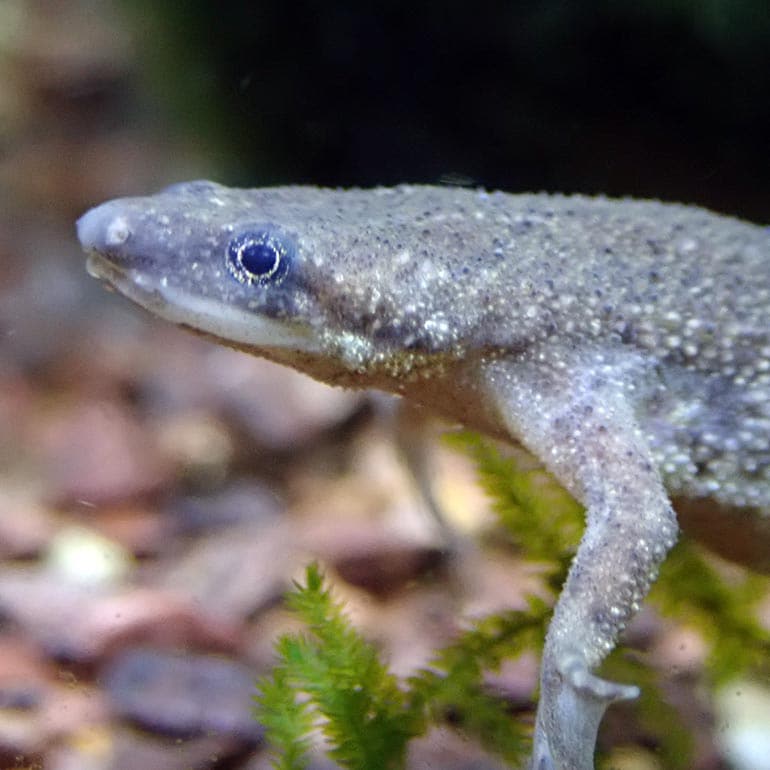
iStock.com/Hailshadow
4 African Dwarf Frogs
Minimum tank size: 10 gallons or more
These dwarf frogs get along well with bettas because they interact very little, if at all. They prefer living in small groups of two or more and like to explore their surroundings. They have lungs not gills, so they come up to the surface to breathe.
Dwarf frogs are peaceful and sometimes lose out to bettas for food, so you’ll need to make sure they get enough to eat.
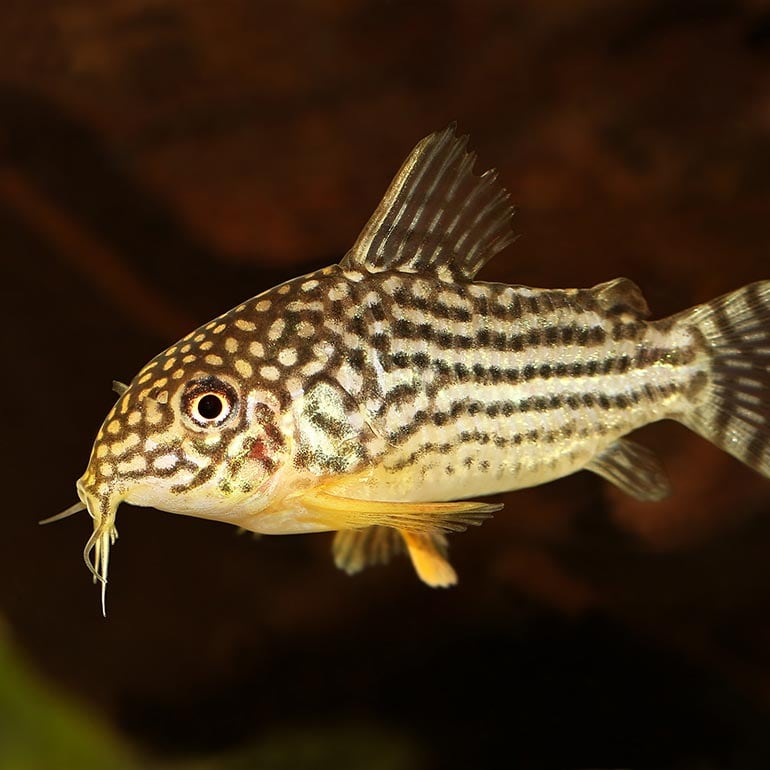
iStock.com/Mirko Rosenau
5 Corydoras Catfish
Minimum tank size: 10 gallons or more
Corys are perfect additions to a community betta tank. They’re non-aggressive, easy to care for, live at the bottom of the tank, and do best in groups of at least five.
More than 160 species of corys exist in the world, but choose your cory wisely. Some of these species can grow quite large, so it’s important the cory species fits your tank size.
For smaller aquariums, consider some of the more petite Corydoras varieties, like the panda cory.
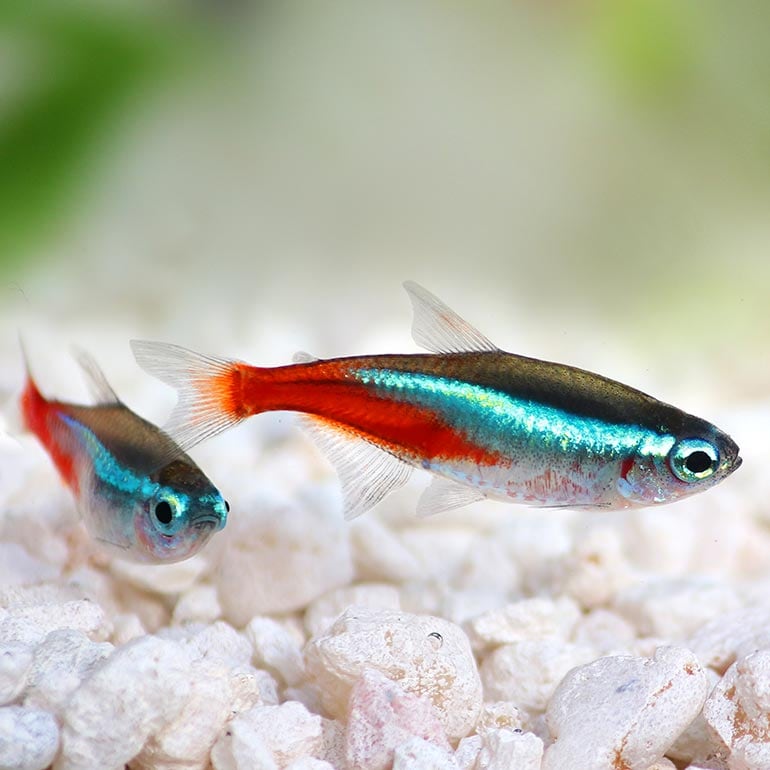
iStock.com/Mirko Rosenau
6 Neon and Ember Tetras
Minimum tank size: 15 gallons
Tetras are shoaling fishes, which means that they swim and live in groups of fish known as shoals; and as such, prefer to live in groups of at least six.
Because tetras spend most of their time midwater, they won’t interact much with a betta, who will primarily occupy the top half of the water column.
Tetras are small, fast, and do well with more horizontal swimming space compared to vertical.
7 Harlequin Rasboras
Minimum tank size: 10 gallons
Like tetras, rasboras are shoaling fish who do best in groups of five to eight. They’re also gentle, peaceful, and tend to keep to themselves.
Rasboras are not brightly colored but are still a beautiful and elegant addition to a community betta tank.
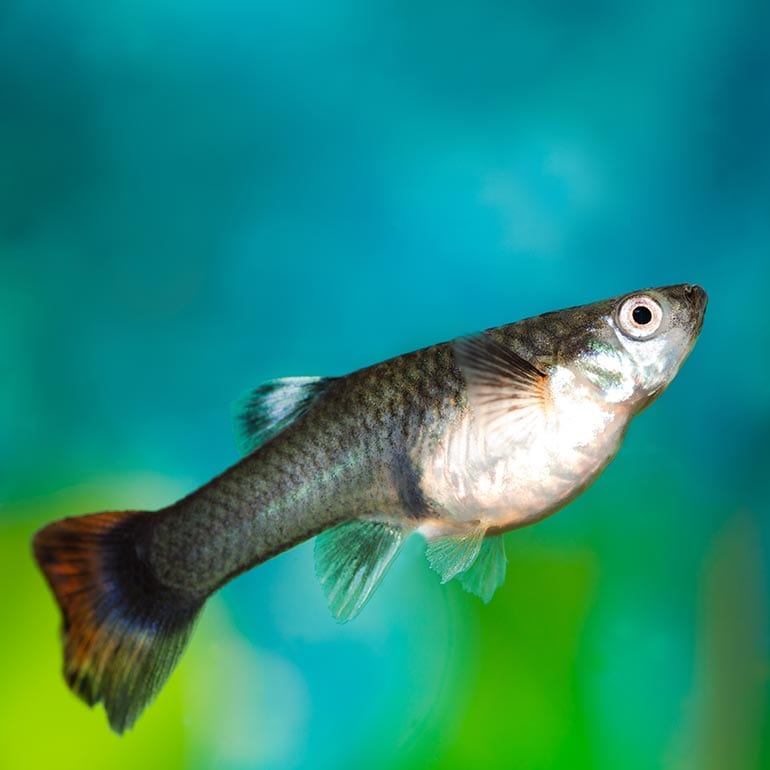
iStock.com/kerkla
8 Guppies
Minimum tank size: 10 gallons
Guppies are docile, resilient, and can live alone or in groups.
When choosing guppies, keep only one gender at a time. That’s because guppies breed easily, and baby guppies are readily hunted down by your betta.
Another tip? Opt for feeder guppies, not fancy guppies, because the long, flowing fins on fancy guppies will probably attract the attention of a male betta.
The flashy fins of male guppies can be seen as a threat to bettas which can cause fin nipping by the male bettas.
Female bettas are more tolerant of guppies overall.

iStock.com/Mirko Rosenau
9 Clown Pleco
Minimum tank size: 20 gallons
Clown plecos are docile algae eaters that are beautiful, easy to care for, and have tough skin in the event your betta gets nippy.
Double-check that you adopt a clown pleco or another smaller species of pleco, like the bristlenose pleco, because the common pleco can reach 2 feet in length!

iStock.com/slowmotiongli
10 Kuhli Loaches
Minimum tank size: 20 gallons
With more than 200 loach species on the planet, it’s not surprising that many of them get quite big. The Kuhli maxes out around 4–5 inches in length and is a bottom-dwelling, eel-like fish that will mind its own business.
Since bettas are middle to high level swimmers, each species occupy different levels of the tank.
Loaches will burrow if you have a sandy substrate, and enjoy eating brine shrimp.
Providing hiding spots for the Khuli such as caves, tunnels, and vegetation help the Khuli to escape and minimize conflict with bettas.
Betta Fish Tank Mates to Avoid
Bettas usually attack scales, gills, and tails and will respond if bitten by aggressive fin nippers. Fish that are larger than your betta should also be avoided.
Fish you should not keep with your betta include:
- Other male bettas
- Tiger barbs
- Cichlids
- Goldfish
- Gouramis
- Puffers
- Red tail sharks
- Angelfish
Can Betta Fish Live Together?
Yes, but only female betta fish can live together. Male bettas are especially aggressive toward other male bettas, which is why they should generally not be kept together in the same tank.
When housed with other community fish, female bettas do best living in a tank that’s at least 10 gallons.
If you decide to keep multiple female bettas in a group (of at least five bettas), make sure to provide many hiding spots. This is to help disperse aggression and help them coexist more peacefully.
How To Introduce Your Betta to Other Fish
Before combining betta fish with other fish in a community tank, take the following precautions:
- Make sure the tank is big enough
- Ensure your betta fish are free of disease and parasites
- Clean the community tank
- Check water conditions
- Keep water at the optimal temperature of 78–80 degrees F
Betta Fish Favorites
Once your tank and fish are ready, it’s finally time to introduce your betta fish to their tank mates!
Here’s how:
Acclimate Your Fish to the Water Temperature
Do this by floating the fish in a plastic cup or bag for 10-15 minutes. This is important because any drastic change in temperature can cause thermal shock which stresses the fish; this can impact the immune system and their metabolism. Shock can cause lethargy, breathing issues, and sometimes even death if the temperature adjustment is not done properly.
Add the Other Fish to the Tank First
It’s always better to add a betta to a community tank, than to add other tank mates to a betta tank because of their territorial nature. Any new additions of fish to a well established betta can stimulate a threat response with your betta.
Release Your Betta Fish and Monitor Their Interactions
If you see any conflicts or notice your betta hiding in a corner, community life may be too stressful for them.
You can help by providing your betta fish with hiding spots where they can escape if they get stressed.
If that doesn’t help, your betta fish may prefer a small tank of their own. Just remember to give them a big-enough tank. While they can survive in tanks smaller than 5 gallons, they won’t live as long, and their quality of life will be reduced.
Frequently Asked Questions
Q:Do betta fish need a companion?
A:Bettas do not need tank mates and are perfectly happy living a solitary life. In fact, community aquariums can be stressful for many male bettas, and if they show signs of discontentment when housed with other fish, it is best to remove them and create a tank of five gallons or more for that one betta.
Q:Can betta fish live with angelfish?
A:Keeping angelfish and betta fish together should only be done with an experienced aquarist. Some people have successfully kept angelfish with non-aggressive female bettas but use extreme caution due to the territorial nature of betta fish it is not advised to house them together.
Q:Can bettas live with guppies?
A:Bettas can live with guppies, and they can actually be pretty compatible tank mates. Fancy, long-finned guppies will not fare as well as their more subdued feeder guppy relatives and will likely be the recipients of aggression from male bettas, so it is best to avoid the flashy fish with bright colors.
Here’s hoping you find the perfect betta fish tank mates for your aquarium!
Expert input provided by Melissa Witherell, DVM.
More to explore:
Share:
